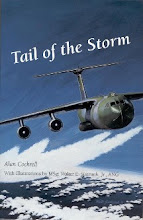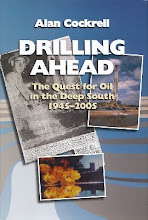 |
The very name “autopilot” evokes funny images. Who can forget Leslie Neilson using “Otto” the inflatable autopilot in the movie, Airplane? We even give our real autopilots a name: George. If anyone knows where that term comes from, post a comment. I'd like to know. In the 757/767 we have three autopilots, labled L, C and R (left, center and right). Our standard practice is to engage the C unit for normal operations. So, when we get into the air and decide to relax we punch the C button and announce “Charlie has it,” or “Charles is in charge.”
Last week you might have read the widely tooted report that pilots are losing their flying skills because of automation. (Click here.) There may be some truth to it. You do get rusty when you don't practice much. But the article alleged that safety is at stake and accidents loom if pilots don't turn George, Charlie, or Otto off more often.
But as is often the case in the circus of journalism, the truth lies in what the report does not say. Incident reports provided by the very pilots who make errors clearly indicate that most flight deviations, such as altitude busts, occur when the autopilot is off. (Why would a pilot purposely turn himself in? Immunity. If you make a mistake and the FAA knows about it because they see it on their radar, you can get protect yourself from “certificate action” by self-reporting your violation. This is a good because it allows researchers to compile data and identify trends.)
But those hand-flying errors are not because the pilots are clumsy. It's because they are overloaded with information, and distracted by radio transmissions, checklists and other possible issues. The autopilot relives their workload.
Now, here is what the report does not say: we can't keep records of errors that never get committed because the autopilots are on, preventing them from happening. Consequently, we will never know how many accidents have been prevented by cockpit automation. Thousands, I suspect. Autopilots are good stuff.
The great majority of pilots I fly with hand-fly the jet for about the first 15 minutes. That's enough time to keep your touch polished. Coming down we normally turn it off about 15 minutes out from landing in good weather and closer in, in bad weather. Some weather conditions, such as ground visibility below 1200 feet require that we let the plane land itself.
There is one thing that bugs me a bit. I ride in the back of RJs a lot. And I can hear that little "cricket" sound (two chirps) in the cockpit when they turn the autopilot off. Too often they do it very close in to the runway. It seems they overuse the autopilot. But then, I know those guys fly five and six legs a day. They get tired. Let them use it.
So be glad your pilots have got George, Charlie and Otto, and tell the “investigative reporters” to write about something they can actually observe, because they can't watch us. We work behind closed doors.
Decision Height opens them for you.
A guy walks by a bar and sees a sign advertising Happy Hour, 5-7, drinks half price. He looks at his watch. It's 4:30. He thinks this is a good place to camp for a while. He goes in and sees another sign that says all drinks 25 cents. “Wow, how do you do that?” he asks the bartender.
"I've done well. Got all the dough I need. I just like to see people happy," he says.
The guy orders his drink and looks down at the end of the bar where two guys are sitting, their heads propped on their elbows, looking at their watches.
"What's up with those guys?" he asks the bartender.
The astonished bartender looks at him and says, "What planet have you been on, Buddy? Those are United pilots. They're waiting on Happy Hour."
Changing out a flat on "Big Foot" (Boeing 777)






Cap'n:
ReplyDeleteThere are competing theories on the origin of the use of "George" for the autopilot. For example, you'll hear folks say that in Naval usage the most junior officer in the wardroom was always referred to as "George", so the name adhered to the autopilot as the junior officer present aloft.
Another theory holds that "George" was the old phonetic code-word for "G", and since the autopilot was a gyro instrument, it got to be called George.
My favorite theory holds that the name was picked up from the popular slang expression "Let George do it."
H.L. Mencken, in American Slang: Its Origin and Nature, provided this as background:
"[The phrase] originated in France, as “Laissez faire à Georges,” during the fifteenth century, and at the start had satirical reference to the multiform activities of Cardinal Georges d’Amboise, prime minister to Louis XII. It later became common slang, was translated into English, had a revival during the early days of David Lloyd George’s career, was adopted into American without any comprehension of either its first or its latest significance, and enjoyed the brief popularity of a year."
Thus, it was available in both American and English usage when the Sperry autopilot was first introduced.
Later on, in 1940, a British comedian named George Formby, Jr. starred in a film titled "Let George Do It" (also released as "To Hell with Hitler"). The film was quite popular and could account for transference of the name George to a mechanism that could "do it" for you on long cross-countries.
My instructor, the late Bob Parks - who solo'ed in an Aeronca C3 on floats in 1937 - always referred to the autopilot as "George" and I acquired the usage from him.
Best regards,
Frank
This is a small thing to add, but in one of the early James Bond novels, Ian Fleming used the term 'George', describing James Bond method of driving without thinking; on 'autopilot'.
ReplyDeleteI enjoy your blog, Captain, as a past frequent passenger.
Mike
Hello Captain,
ReplyDeleteI've been reading through your blog in my spare time and I love it! I'm at about 75% now I think until I got an e-mail you posted a new entry.
Thank you, it's inspiring but also shows what flying for a big airline is like. I didn't know you were allowed to say things the way they often are but it does give one a good perspective of your world.
Bas
Ps. Now that you're flying the 747, what's it like to sit way up higher!?
Isn't there a requirement amongst most airlines that you HAVE to enable the autopilot after a certain point on climb-out and that it can not be disabled until final approach?
ReplyDeleteJust curious.
Pat
1931 is the earliest printed reference to George as autopilot that has been found by the compilers of the Oxford English Dictionary:
ReplyDelete"1931 Flight 30 Oct. 1082 ‘George’ is the automatic pilot about which there has been so much talk lately."
About the 2 or 3 computer zero zero landing system, just how far have
ReplyDeletethe computers been programmed to go? After touchdown, can it steer
the plane, can it brake to a stop, does it know which airport where it
is landing, can it do a missed approach?
wayne in louisiana
Excellent post, Captain, as usual!
ReplyDeleteMay I also point out a post on this subject by fellow pilot and blogger of yours, Sam: http://fl250.blogspot.com/2011/09/i-robot.html
He, too, argues, in detail that automation - if applied right - prevents more accidents than it causes. Like yours, his post is a gread read, too.
All the best from Hamburg, Germany!